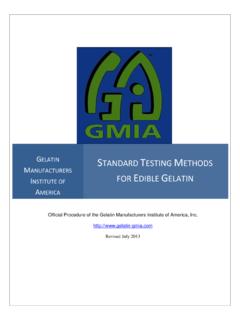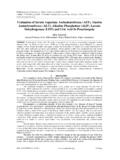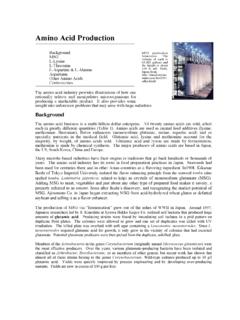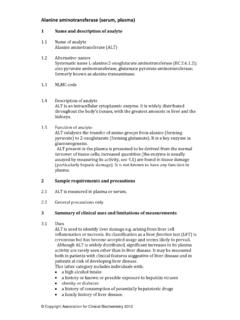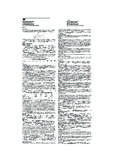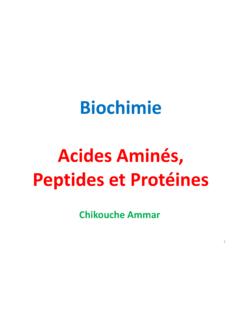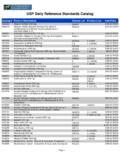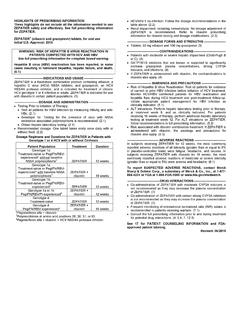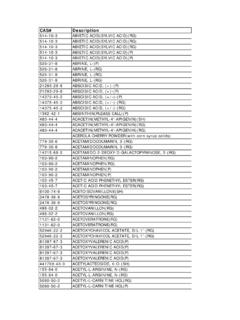Transcription of G I GELATIN HANDBOOK A
1 Written and produced by the members of the GMIAGELATINMANUFACTURERSINSTITUTE OFAMERICAGELATINHANDBOOK1 GELATIN Manufacturers Institute of AmericaMembers as ofJanuary 2012 Atlantic GELATIN / Kraft Foods Global StreetWoburn, Massachusetts 01801(781) 938-2200 FAX (781) 935-1566 GELITA North America2445 Port Neal Industrial RoadSergeant Bluff, Iowa 51054(712) 943-5516 FAX (712) 943- GELATIN Canada, Paton RoadToronto, Ontario, Canada M6H 1R8(416) 532-5111 FAX (416) 532-6231 Leiner7001 N. Brady StreetDavenport, Iowa, 52806 Sales/Customer Service(516) 822-4040 FAX (563) 386-5755 , South Rochester StreetMukwonago, Wisconsin 53149US Customer Service (888) 455-3556 FAX (262) 363-2789 International NA895 Italia StreetTerrebonne Quebec J6Y2C8 Canada(450) 621 2345 FAX (450)621 3535 of AND CHEMICAL Acid Content of AND Specifications for Edible as a Food Nutritional Properties of GELATIN in Specificationsfor Pharmaceutical Specifications for Photographic CITED(References).
2 223 IntroductionIn theNational Formulary(1) GELATIN is defined asa product obtained by the partial hydrolysis of collagen derivedfrom the skin, white connective tissue and bones of derived from an acid-treated precursor is known as Type A and GELATIN derived from an alkali-treated processis known asType theFood Chemicals Codex(1) GELATIN is defined asthe product obtained from the acid, alkaline, or enzymatichydrolysis of collagen, the chief protein component of the of the skin, bones, and connective tissue of animals,including fish CAS#, 9000-70-8, does not occur free in nature, and cannot be recovered from horns, hoofs and other non-collagen containing parts of vertebrate animals. There are no plant sources of GELATIN , and there is no chemicalrelationship between GELATIN and other materials referred to as vegetable GELATIN , such as seaweed earliest commercial production of GELATIN appears to have been in Holland around 1685, followed shortlythereafter in England about 1700.
3 The firstcommercial production of GELATIN in the United States was inMassachusetts in is an important material, findingapplication in the food, pharmaceutical and photographic industries as well asdiverse technical ProductionAn explanation of the GELATIN production process will help in understanding the properties and the characteristicswhich exist among the several types and described in the introduction, GELATIN is derived from collagen which is the principalconstituent of connective tissues and bones ofvertebrate animals (2, 3). Collagen is distinctive in that it contains an unusually high level of the cyclic amino acidsproline and hydroxyproline (4). Collagen consists of three helical polypeptide chains woundaround each other andconnected by intermolecular crosslinks (5, 6).
4 GELATIN is recovered from collagen by hydrolysis. There are several varieties of GELATIN , the composition of whichdepends on the source of collagen and the hydrolytic treatment GELATIN production processes areshown in Figure 1 (7).Throughout the entire process, strict attention is paid to Good Manufacturing Practices and HACCP programs toensure the purity of the GELATIN . The product is tested at various intervals during production and as a finishedproduct to ensure compliance with customer, and international standards and principal raw materials used ingelatin production are cattle bones, cattle hides, and porkskins. Several alternative sources include poultry and substances, such as minerals (in the case of bone), fats and albuminoids (found in skin), are removed bychemical and physical treatment to give purified collagen.
5 These pretreated materials are then hydrolyzed to gelatinwhich is soluble in hot recovered from bone is used primarily for pharmaceutical purposes. The so-called green bone from theslaughter of cattle is cleaned, degreased, dried, sorted, and crushed to a particle size of about 1-2 cm. The pieces ofbone are then treated with dilute hydrochloric acid to remove mineral salts. The resulting sponge-like material iscalled ossein. From this point on in the manufacture of Type B GELATIN , both cattle hides and ossein receive hides are available from trimming operations in leather production. The hide pieces are usually dehairedchemically with a lime/sulfide solution followed by a mechanical the production of Type B GELATIN , both ossein and cattle hide pieces are subjected to lengthy treatment with analkali (usually lime) and water at ambient temperature.
6 Depending on previous treatment, the nature of the material,the size of the pieces, and the exact temperature, liming takes 5-20 weeks, usually 8-12. The process is controlledby the degree of alkalinity of the lime liquor as determined by titration with acid, or by making test usually requires more liming time than cattle hides. Additional lime is added to maintain an excess, therebycompensating for any consumed. During liming some deamination of the collagen occurs, with evolution of conditioning, the raw material is thoroughly washed with cold water to remove excess lime; the pH adjusted withacid; and the product extracted with hot water to recover the soluble is a significant raw material source for production of edible GELATIN in the United States. The short timerequired for pre-treatment prior to extraction, and the minimization of wastewater generated are important economicfactors in the manufacture of GELATIN from this raw material.
7 Supplied as either fresh or frozen, porkskins come fromslaughter houses and meat processing plants already trimmedof fat, flesh and hair. Porkskins are usually dehairedby scalding with a hot dilute caustic soda porkskins are utilized for production of Type A GELATIN they are washed with cold water and then soaked in colddilute mineral acid for several hours until maximum swelling has occurred. Hydrochloric acid and sulfuric acid aremost commonly employed. The remaining acid is then drained off and the material is again washed several timeswith cold water. The porkskins are then ready for extraction with hot pH, time, temperature, and number of extractions varies from processor to processor depending on productneeds, type of equipment employed, timing of operations, and economics.
8 Extraction procedures are closelycontrolled inthe manufacture of both Type A and Type B GELATIN since they influence both quality and continuous extraction is used by some processors, most methods still employ discrete batch is normally carried out in stainless steel vessels equipped with provisions for heating and number of extractions varies, 3-6 is typical. The first extraction generally takes place at 50-60 C, subsequentextractions being made with successive increases intemperature of 5-10 C. The final extraction is carried out closeto the boiling point. Extracts are kept separate, analyzed, and subsequently blended to meet various initial extraction usually provides a superior product,compared with subsequent extractions. Earlier extractionshave higher molecular weights, higher viscosity, higher gel strength, and lighter color.
9 Thelater extractions are made at increasingly higher temperatures; the resulting product haslower molecular weight, lower gel strength, and darker dilute GELATIN solutions from the various hot water extractions are filtered, deionized, andconcentrated by crossflowmembrane filtration and/or vacuum evaporation. The gelatinsolution is then chilled and either cut into ribbons or extruded as noodles, and the gelledmaterial is deposited as a bed onto an endless, open weave, stainless steel belt is passedthrough a drying chamber, which is divided into zones in each of whichthe temperature and humidity of the drying air is accurately controlled. Typical temperaturesrange from about 30 C in the initial zone up to about 70 C in the final zone. The air is6usually conditioned by filtration, dehumidification and tempering.
10 Drying involves progressive increases in airtemperature, often with exhaustion of moist air and replenishment with conditioned air. Drying time is 1-5 hours,depending on the quality and concentration of the material and the exact conditions employed. The rate of drying iscarefully controlled to avoid melting and case hardening. The GELATIN leaves the dryer with a moisture content ofapproximately 10%. The dried bed is then broken into pieces that are ground to the required particle size. Driedgelatin is tested for quality and gel strength according to standard methods developed by the GELATIN ManufacturersInstitute of America (8).Although gelatins are sometimes referred to as edible, pharmaceutical, photographic or technical, these terms referonly to their uses, and not to the methods of AND CHEMICAL PROPERTIESG elatin is nearly tasteless and odorless (FCC).
